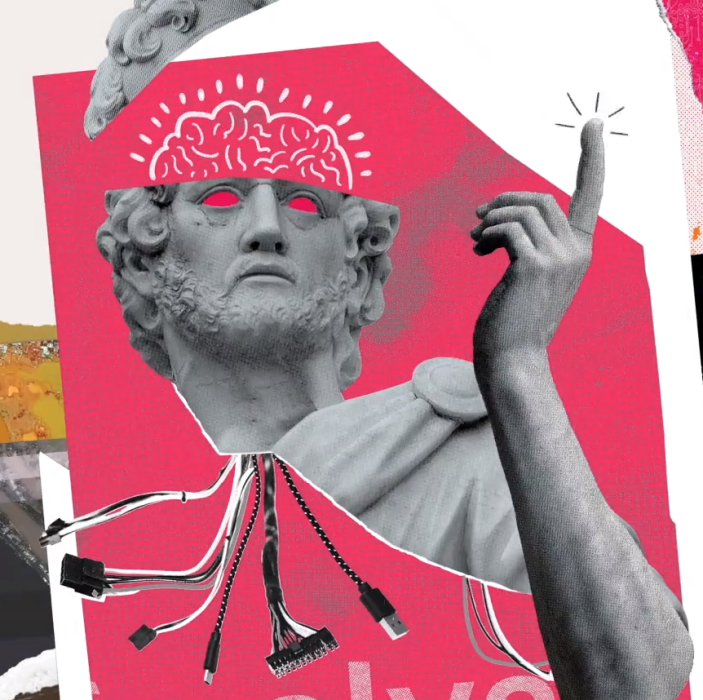Part Two of a two-part article in which I discuss 2020 trends with founding partner and Chief Client Officer of Fjord, Mark Curtis. The first part is here.
5. Designing intelligence
Mark Curtis: Pretty much 80 percent of CEOs are saying they’re using artificial intelligence now and are going to use it more in the future, and pretty much 80 percent of the U.S. public are saying they don’t know how they feel about artificial intelligence. There’s already a lot of artificial intelligence in our lives, some of which we’re aware of when we think about it, like Google Lens; some of which we may be aware of, like most stock trading in the U.S. now takes place using artificial intelligence; and some we’re not aware of at all, like the machines in airplanes being tuned by artificial intelligence.
A lot of what’s been happening is about efficiency. The next wave will be more about tuning artificial intelligence to help us make strategic decisions. Everybody talked about Deep Mind a couple of years ago, its ability play chess and its ability to play Go. Although those are super-complicated games, the machine can be taught the parameters. DeepMind is now attacking a very complicated strategic online game called StarCraft. The context of Go never changes —
it’s the board and the beads —
but the context of StarCraft changes all the time. Already AlphaGo [the DeepMind program] has become the world-beater. So we’re going to see an increasing amount of AI being used at a strategic level in companies. Salesforce is using AI at a board level to help them understand what they’re looking at, and make decisions about it.
6. Digital doubles
MC: There’s already an idea called “digital twins.” Digital twins is the twinning of real life machines with a digital counterpart. Those machines could be really big things, like airplanes, or power generators. Those things have a digital twin which engineers can monitor, and do predictive maintenance.
“Digital doubles” is about what happens when that happens to you. Actually it hasn’t happened yet, but we saw an enormous number of signals that people are leaning in this direction. We extrapolated from the lots of ways we’re creating synthetic human beings online — like @lilmiquela on Instagram, or Shudu, a completely unreal fashion model. We’re also seeing individuals starting to do this with things like “finstas” — fake instagram accounts.
Probably the most important for me is Eternime, which is a service which creates a digital replica of you, available for your children, grandchildren, and great grandchildren to interact with, forever and ever. They’ve leapt into a future need, which is immortality, and you can see why; there’s probably a lot of money in immortality. We’re dragging it back to the now; if you would do that for immortality, why would you not now create a digital double, a manifestation of me which can begin to do things?
One of the obvious things it can do is aggregate my data into one place. The next thing is that, with my data, it can interact with other entities. That might be other digital doubles. It might negotiate my calendar, it might also negotiate with somebody I wanted to trade with. There’s incredible potential.
When you think of the value people put on attention, because it’s scarce and will always be scarce. It’s limited to 14 hours a day, unless you can’t sleep. Even that assumption is under threat, because if digital doubles become real, they can provide your attention, even when you’re asleep. I do think Google Duplex is one of the most interesting launches of the last two or three years.
7. Life-centered design
MC: One of the mantras of what we do has been “user-centered design” — UCD is a known acronym. We talk about “users” incessantly. One of my colleagues used to say, we’re the only industry other than the illegal drugs industry, which calls its customers “users.” We’re saying we need to move on from that.
If you take seriously “liquid people,” and if you take seriously “many faces of growth” [see part one], the logical consequence is that we can’t continue to be focused on the selfish needs and desires of just one person. What we need to do it to start to think about that one person in the context of the system they’re in, and that system might be environmental, but might also be social as well. That’s a very big change.
I’ve realized we’re actually saying design has to change over the next ten years. It’s a paradigm shift I believe, and it’s challenging because we’ve looked at the user layer, and we’ve looked at the business value layer, but now we need to look at the systemic layer in between. What are the ramifications, what are the feedback loops, what are the unintended consequences — how do we design around those, and plan for them now? It’s not going to be easy.








